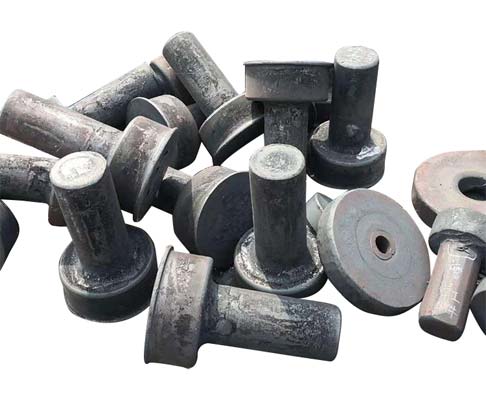- Contact Innally, Let you purchase forgings in China more favorable prices, products more assured!
- Hotline:+(86)15038323776 Email:innally@innally.com
Material selection and performance optimization of flange forgings
- Category: Metal forging, Steel forgings
- |
- Date: 04/01/2024
the selection of the right materials and performance optimization methods are crucial to the manufacture of high-quality flange forgings. In the production process, factors such as working conditions, medium properties, economy and process requirements should be considered comprehensively to ensure that the selected materials and processes can meet the actual needs and obtain the best performance.
Product Details
When selecting the material for flange forging, several factors need to be considered, including operating temperature and pressure, medium properties, economy and process requirements. The following are some common flange forging materials and their characteristics:
Carbon steel: Carbon steel is a relatively low price, performance is more common material, suitable for low pressure piping system. Carbon steel flange forging has good wear resistance and corrosion resistance, but it is easy to be damaged under high temperature and high pressure.
Stainless steel: Stainless steel is a high-end flange material that can withstand higher pressures at higher temperatures. Its advantages are not easy to rust, with good corrosion resistance and mechanical properties, but the price is relatively high. CF8M (316 stainless steel) and other models are common.
Alloy steel: Alloy steel is suitable for high pressure and high temperature piping systems, which has high corrosion resistance and high temperature strength. But the price is also relatively high.

When choosing materials, you need to make trade-offs based on actual needs. For example, if you need to work in harsh environments such as strong acids, strong alkalis, high and low temperatures, special alloy steels such as CA6NM and CA15 should be selected. If the butt welding process is required, carbon steel flange forgings should be selected.
In addition to choosing the right material, the performance of flange forgings can be optimized by a number of process means:
Heat treatment: The mechanical properties of the material can be improved by heat treatment, such as hardness, toughness and corrosion resistance. According to different materials and process requirements, the appropriate heat treatment process parameters are selected to achieve the best performance.
Surface treatment: Surface treatment can change the physical and chemical properties of the surface of the flange forging to improve its corrosion resistance, wear resistance and oxidation resistance. Common surface treatment methods are spraying, electroplating, carburizing and so on.
Process optimization: Through the optimization of the processing process, the stress concentration can be reduced, the generation of cracks can be reduced, and the overall performance and service life of the flange forging can be improved.
Material composite: The use of composite technology, the advantages of different materials together, can be obtained with excellent performance of flange forgings. For example, the combination of stainless steel and high-strength steel has both the corrosion resistance of stainless steel and the strength and rigidity of high-strength steel.
In summary, the selection of the right materials and performance optimization methods are crucial to the manufacture of high-quality flange forgings. In the production process, factors such as working conditions, medium properties, economy and process requirements should be considered comprehensively to ensure that the selected materials and processes can meet the actual needs and obtain the best performance.
nannan
INNALLY mainly provides you with various types of cast and forged parts products. Welcome your inquiries! innally@innally.com
Related Products
Search
Forging center
- Steel forgings
- Aluminium alloy forging
- Titanium alloy forging
- Stainless steel forging
- Copper forging
- Automotive forgings
- Locomotive forging
- Bicycle forgings
- Motorcycle forging
- Rigging and fasteners
- Bearing forging
- Electric power fittings
- Marine forging
- Mechanical forgings for metalworking
- Mining machinery forgings
- Marine engineering forgings
- Construction machinery forgings
Popular product

© 2025. All Rights Reserved.






